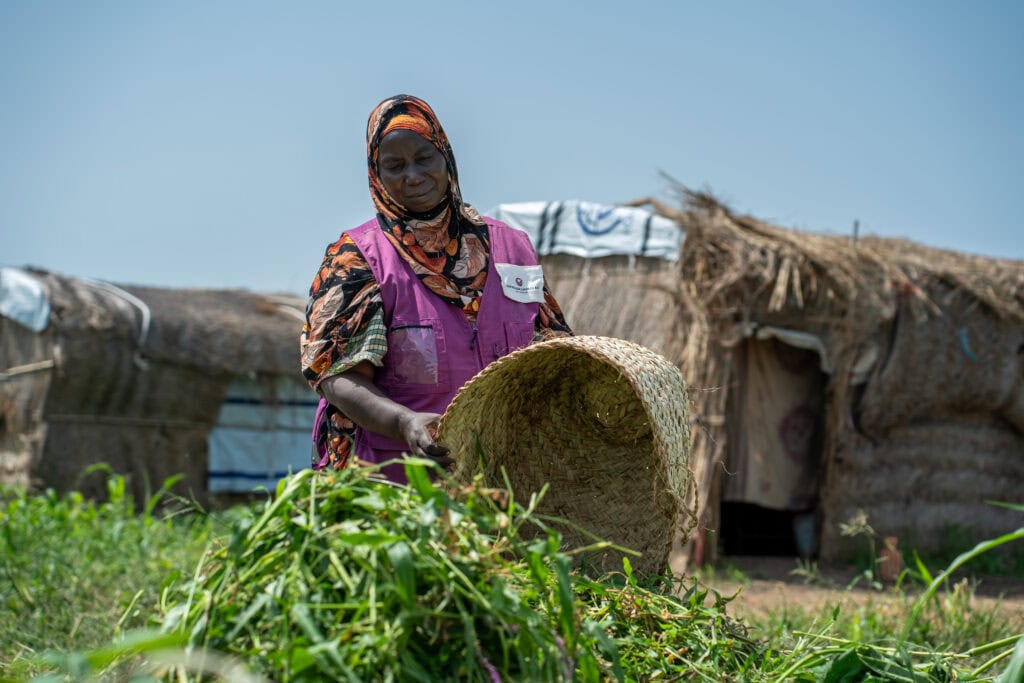This policy note brings together ACT Alliance analysis and member insights on how climate change, conflict, and human mobility intersect in fragile contexts. It uses Sudan and Latin America & the Caribbean as illustrative cases. The paper aims to inform ongoing EU and ACT advocacy on the humanitarian–development–peace nexus and ongoing discussions on the EU’s fragility approach.
Countries and regions globally are facing a convergence of risks. Climate change is intensifying extreme weather events, droughts, wildfires and floods. Simultaneously, many areas continue to experience conflict zones, organized violence, and protection risks. These dynamics cause people to move within their country and across borders. Economic, environmental, and security factors all play a role in these often mixed flows. The result: growing humanitarian and development needs, rising pressure on host communities and public services, and increasing complexity for policymakers. Sudan and Latin America and the Caribbean are illustrative of realities across fragile contexts – with comparable trends in the Sahel and Middle East.
Cross-cutting Observations and key messages:
- Data and definitional frameworks remain insufficient, particularly for climate-induced displacement. A significant share of mobility driven by environmental and climatic stressors remains undocumented or “hidden” — such as internal relocations or movements linked to slow-onset processes — and is therefore poorly integrated into existing migration, displacement, and disaster-risk governance systems.
- Preventive action yields returns. Preventive and anticipatory action delivers tangible returns. Investing in sustainable development pathways—including water infrastructure, climate-smart agriculture, early-warning systems, and livelihood diversification—addresses the structural drivers of displacement and migration before crises erupt. Such investments not only reduce exposure to shocks and chronic vulnerabilities but also lessen dependence on humanitarian aid and curb the politicization or weaponization of assistance. The alternative—continued underinvestment in prevention—leads to escalating humanitarian needs and instability. In Latin America and the Caribbean, this reality is already visible: in 2025, an estimated 34.4 million people are in need (PIN) of humanitarian assistance, a figure that underscores the cost of inaction.
- Integration of migration protection and adaptation agendas is lagging. The integration of migration protection and climate adaptation agendas remains insufficient and fragmented. In many countries, migration continues to be addressed in isolation from climate change and disaster risk reduction frameworks, resulting in policy incoherence and missed opportunities for preventive action. In the Caribbean, for example, mobility patterns are complex and multidirectional—people may return, be in transit, or serve as hosts to others displaced by climate-related events. These dynamics must be systematically embedded into national climate adaptation, disaster management, and development policies to ensure that responses are comprehensive, inclusive, and reflective of the region’s realities.
- Increase the share of climate-specific finance directed to Fragile and conflict affected states: In 2022, only about 6% of the EU’s adaptation financing to developing countries was committed to the 17 most climate-vulnerable and conflict-affected countries which include Yemen, Syria and Sudan. The EU should at least triple this figure to help prevent even worse climate-induced hunger crises in years to come and more effectively respond to climate-induced displacement.
- Increase the share of climate-specific finance directed to Fragile and conflict affected states: In 2022, only about 6% of the EU’s adaptation financing to developing countries was committed to the 17 most climate-vulnerable and conflict-affected countries which include Yemen, Syria and Sudan. The EU should at least triple this figure to help prevent even worse climate-induced hunger crises in years to come and more effectively respond to climate-induced displacement.
- Regional cooperation is essential. Taking the example of LAC, climate impacts and migration flows transcend national borders. From the Andean highlands (shared ecosystems) to Central American routes (shared migratory flows) to the Southern Cone (ecosystems and cross-border wildfires), cooperation in data sharing, joint adaptation, and migration governance is key.
- Mobility is multi-causal and compounding shaped by overlapping drivers such as climate hazards, livelihood stress, and conflict or violence. These factors often compound one another: for instance, extreme weather events can destroy crops and livelihoods, prompting migration in search of safety or income, while insecurity and violence can trigger displacement, leaving affected populations even more exposed to subsequent climate risks. Yet, policy responses remain fragmented, with climate adaptation, protection of migrants and displaced populations often operating in isolation—undermining their collective effectiveness and the capacity to deliver coherent, rights-based solutions.
